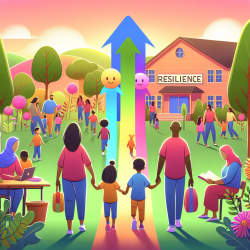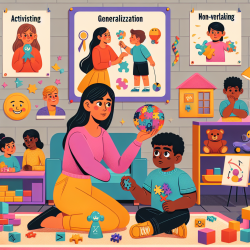Childhood, often romanticized as a time of carefree exploration and joy, can also present a series of challenges that test the resilience of our young ones. From the anxiety of adapting to new environments and the pain of bullying to the struggles that come with family issues, children face a myriad of stressors. The key to navigating these challenges lies in the power of resilience—the ability to thrive despite adversity.
The journey to resilience, however, is not a solitary one. It requires a village—parents, teachers, and caregivers working together to equip our children with the skills they need to face life's hurdles with strength and grace. The good news is that resilience is not an innate trait but a skill that can be nurtured and developed over time.
10 Tips for Building Resilience in Children and Teens
- Make Connections: Encourage your child to engage with peers and build a strong family network. Social support is a cornerstone of resilience.
- Empower Through Service: Help children feel empowered by involving them in age-appropriate volunteer work or tasks they can master.
- Maintain a Daily Routine: A predictable routine can provide comfort, especially during times of distress.
- Encourage Breaks: Teach children to take breaks and focus on controllable aspects of their life to manage anxiety.
- Promote Self-Care: Basic self-care practices are essential for emotional balance and well-being.
- Set and Move Toward Goals: Help children set realistic goals and take steps towards achieving them, fostering a sense of accomplishment and resilience.
- Nurture a Positive Self-View: Remind children of their past successes and their ability to overcome challenges.
- Maintain Perspective: Help children see beyond the current moment and foster an optimistic outlook on life.
- Seek Self-Discovery: Encourage children to learn about themselves through the challenges they face.
- Accept Change: Teach children that change is a part of life and new goals can replace unattainable ones.
Resilience is particularly crucial during the formative years of preschool, elementary, middle, and high school. Each stage presents unique challenges and opportunities for growth. For very young children, resilience might mean overcoming separation anxiety or adapting to new routines. Elementary students may need support in navigating friendships and academic pressures, while middle and high schoolers face the complexities of social dynamics and identity formation.
In supporting our children's journey toward resilience, it's important to recognize the signs of stress and anxiety. Changes in behavior, such as increased irritability or withdrawal, can signal distress. Creating a safe and open environment where children feel comfortable expressing their fears and concerns is crucial.
Ultimately, developing resilience is a personal journey that varies from child to child. What works for one may not work for another, and it's important to tailor your approach to meet the unique needs of each child. If you find that your child is struggling to cope, don't hesitate to seek support from mental health professionals who can provide additional guidance and resources.
Remember, the goal is not to shield our children from adversity but to empower them to face it with courage, confidence, and the knowledge that they are not alone. By fostering resilience, we prepare our children not just to survive but to thrive, no matter what life throws their way.
For more information, please follow this link.










